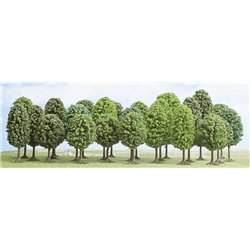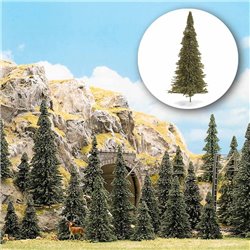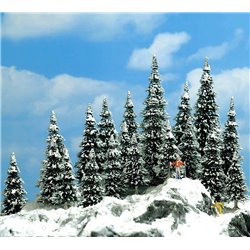Generally, plastic model plane kits do not come with plinths supplied. Nowadays, the majority of kits are designed to...
No products
Product successfully added to your shopping cart
There are 0 items in your cart. There is 1 item in your cart.
Search Tips
Christmas and New Year
We are dispatching orders every weekday apart from Christmas Day, Boxing Day and New Year's Day.
If you order is time critical, select next day delivery at checkout.
The shop in Sandown is closed from 25th December, reopening on 30th December.
How many trees do I need on my model railway layout?
The number of trees you need for your model railway layout depends on several factors, such as the scale of your layout, the desired scenery density, and personal preference. However, here are some general guidelines to consider:
- Scale: The scale of your model railway will determine the appropriate size and number of trees. For example, in a larger scale like 1:22.5 (G gauge), you'll need fewer trees to represent a realistic scene, while in smaller scales like 1:76 (OO gauge) or 1:148 (N gauge), you'll need more trees to create a dense and realistic environment.
- Baseboard size: The physical size of your baseboard will also play a role. A larger baseboard will generally require more trees to fill the space and create depth and interest, while a smaller baseboard may need fewer trees to avoid overcrowding.
- Scenery density: The desired density of your scenery will affect the number of trees needed. If you prefer a more natural and dense woodland setting, you'll need a greater number of trees. Conversely, if you prefer a more open and sparse landscape, fewer trees will be required.
- Variety: To create a more realistic and visually appealing scene, it's recommended to use a variety of tree types, sizes, and styles. This will help avoid a monotonous and repetitive appearance.
As a general rule of thumb, for a moderate-sized HO scale layout such as a typical 4x8 feet baseboard, you might need anywhere from 50 to 100 trees, depending on the desired scenery density. In N gauge, on the same baseboard size, you could easily have from 200 to 400 trees. However, this is just an estimate, and the actual number will vary based on your specific layout design and personal preferences.
It's always a good idea to start with a smaller number of trees and gradually add more as needed, rather than overcrowding the baseboard from the beginning. Additionally, experimenting with different tree placements and combinations can help you achieve a visually appealing and realistic scenery. Bear in mind that most modellers tend to have less trees than what would be seen in real life.
Click here to receive the tips weekly in your mailbox. You can unsubscribe at any time.










